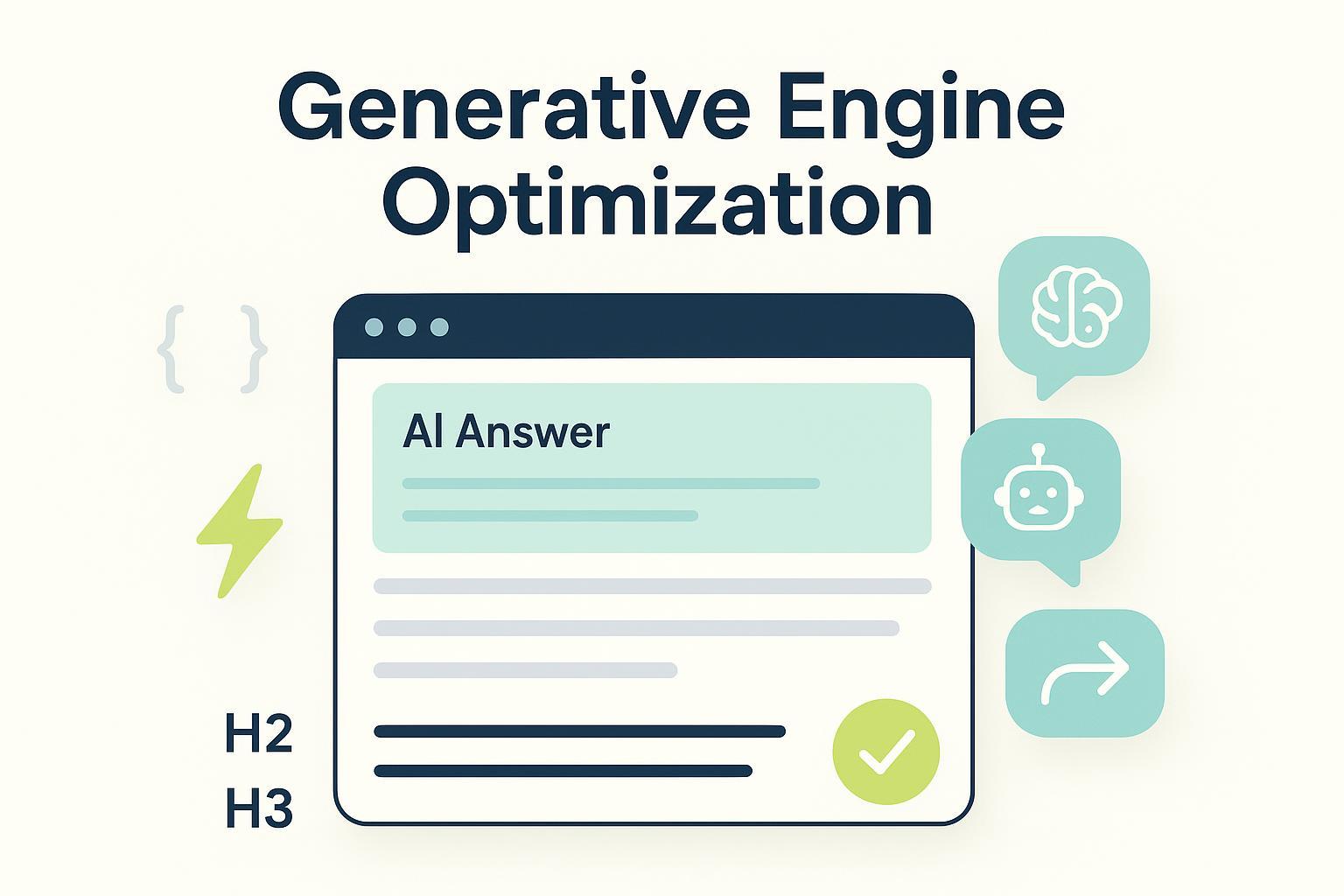Generative Search for Complex Specs in Industrial Procurement
Generative search streamlines procurement by automating spec analysis, improving supplier matching, and offering data-driven insights for smarter decisions.


Think of a tool that makes hard buying tasks easier. It also saves you time and money. Generative search, using smart AI, does just that. It looks at huge amounts of data, spots patterns, and finds the best options for you. Handling tricky buying needs can feel tough, especially when things keep changing. Generative search helps by doing this work for you.
More people are using this technology quickly. For example:
40% of supply chain groups now use generative AI.
76% use it to manage categories and work faster.
63% say it helps them see their buying steps better.
With these tools, generative search changes how you buy things. It helps you make smarter choices with more accuracy.
Key Takeaways
Generative search uses AI to make buying tasks easier and faster.
Using generative search for vendor management reduces mistakes and speeds things up.
AI insights help you choose wisely and work well with suppliers.
Generative search predicts needs and helps plan better while avoiding risks.
To use generative search, you need good data systems and trained teams.
Challenges in Procurement for Complex Specifications

Managing Diverse and Changing Needs
Buying for projects often means handling many changing needs. You might need special materials or follow new rules. This gets harder as industries grow and change. For example, the market for buying software is expected to grow. It will go from $7.5 billion in 2023 to $19.50 billion by 2034. This shows how much people need better tools to handle changes.
Statistic | Value |
|---|---|
Market Size by 2034 | $19.50 Billion |
Market Size in 2024 | $8.51 Billion |
Growth Rate (2024-2034) | 8.6% |
Market Size in 2023 | $7.5 Billion |
Also, 87% of companies now use online tools to find suppliers. About 62% have programs to work with different types of suppliers. These numbers show how buying is getting more complicated. Better tools are needed to keep up with these changes.
Problems with Old Tools for Complex Needs
Old buying tools often don’t work well for tricky needs. Doing things by hand or using old systems slows everything down. For example, supplier ratings like defect rates show these tools can’t handle tough rules. Risk checks also show gaps that could cause big problems.
You might also waste time because of poor communication. Without connected systems, finding what you need takes longer. Decisions are harder to make, and plans don’t work as well. This makes it tough to keep buying processes smooth.
Scattered Data and No Connection
Scattered data is a big problem in buying. When data is spread out, it’s hard to see how suppliers are doing. It’s also tough to follow rules. For example, companies often deal with messy data and repeated reports. Starbucks had similar problems, like manual inventory checks and uneven processes. These issues raised costs and hurt profits. This shows why connected systems are so important.
To fix this, you need tools that bring data together. These tools should give real-time updates and clear insights. Better data tools can make buying easier, improve planning, and help suppliers work better together.
Generative Search as a Solution

Automating Specification Analysis and Matching
Generative search makes analyzing and matching specs much easier. Instead of reading through many catalogs or documents, AI does the work. It looks at lots of data, finds patterns, and matches needs with suppliers or products.
For example, Acme Manufacturing had delays and high costs from manual vendor selection. Using generative AI, they automated vendor management steps. This cut down manual work, improved accuracy, and sped up onboarding. Byrne Dairy also used AI to simplify supplier onboarding and compliance checks. They gained better workflows and clearer procurement data.
Automation removes repeated tasks, lowers mistakes, and saves time. It lets you focus on important work while keeping processes smooth and scalable.
Leveraging AI for Data-Driven Insights
AI turns raw data into useful information for smarter choices. It studies supplier performance, market trends, and past data to give clear insights. This helps you spot risks, save money, and build better supplier relationships.
Companies like LMN and RST have seen these benefits. LMN used AI to assess supplier risks, cutting disruptions by 25% and boosting compliance by 20%. RST used AI for purchase orders, reducing processing time by 40% and errors by 15%. These examples show how AI improves procurement efficiency.
"AI helps teams track prices, make smart choices, and save money." – Emily Thompson, Procurement Analyst
Using AI gives you better insights to plan, negotiate, and manage procurement strategies effectively.
Enhancing Decision-Making with Predictive Capabilities
Generative search doesn’t just study old data; it predicts future trends. AI forecasting helps you plan demand, spot risks, and act early. This keeps you ready for market changes and supply chain issues.
For example, AI improves demand forecasts, aligning buying with real needs. It predicts delivery times and supplier reliability. A $10 billion company could save $180 million yearly with AI tools. This happens by cutting costs and improving efficiency.
What It Measures | |
|---|---|
Cost savings | Tracks lower expenses and better cost control. |
Supplier reliability | Measures delivery times, quality, and compliance rates. |
Process efficiency | Shows time and resources saved in procurement steps. |
Risk mitigation | Tracks fewer disruptions from risks and market changes. |
Forecast accuracy | Measures how precise demand and spending predictions are. |
Adding predictive tools to your strategy helps control costs and avoid risks. It also makes operations smoother and adapts to changing needs quickly.
Benefits of Generative Search in Procurement
Speeding Up Procurement Tasks
Generative search makes procurement faster by automating boring tasks. You don’t have to search through supplier catalogs or compare specs yourself. AI tools do this work, so you can focus on bigger goals. For example, generative search finds suppliers that match your needs quickly. This saves time when looking for the right supplier.
Real-time data helps you decide faster. If you need to change supply plans, generative search gives helpful tips. It also checks contracts for problems and flags risks automatically. By simplifying these steps, you can work faster and meet deadlines easily.
Tip: Use generative search to speed up supplier onboarding and contract checks. It saves time and keeps your work accurate.
Saving Money and Cutting Costs
Generative search helps save money in procurement. It finds ways to cut costs by studying supplier performance and market trends. You can use this info to get better deals and spend wisely.
AI tools also stop you from wasting money. They predict what you’ll need, so you don’t buy too much or too little. For example, generative search checks if suppliers are reliable. This helps you pick partners who deliver good quality and value. It reduces problems and lowers costs.
Planning smartly with generative search saves money over time. Adding it to your process helps you spend less while keeping high standards.
Building Better Supplier Relationships
Generative search improves how you work with suppliers. It shows how well suppliers perform, helping you build stronger partnerships. You can track delivery times, quality, and compliance to ensure they meet your needs.
This technology also helps you find suppliers that fit your goals. It uses data to pick partners who match your plans. Better communication tools make it easier to manage contracts and solve problems.
Note: Good supplier relationships lead to better results. Use generative search to build trust and work better together.
Generative search turns supplier sourcing into a smarter process. It helps you handle complex supplier networks and succeed with better teamwork.
Addressing Risks and Limitations
Keeping Data Accurate and Organized
Good data is key to buying success. Bad data causes mistakes, missed chances, and rule-breaking. You need systems that use clean and organized data. For example, checking spending data helps you group suppliers and get better deals. It also helps you plan needs and make smart choices.
One factory improved supplier work by tracking delivery times and quality. This cut costs and made their supply chain more reliable. Predictive tools can also help manage stock wisely, saving up to 20% in costs. By focusing on good data, you can avoid risks and build better supplier connections.
Fixing System Connection Problems
Adding generative search to old systems can be hard. Problems like mismatched steps, poor communication, or old tools may happen. To fix this, talk clearly with vendors and set simple rules. Regular meetings help everyone work together smoothly.
Using cloud tools can make connecting systems easier. These tools collect data and give easy access, helping with rule checks. For example, strong onboarding and regular reviews can find problems early. Teaching your team about spending rules also makes your buying process stronger.
Handling Privacy and Fairness Issues
Privacy and fairness are big concerns with AI in buying. Generative AI might show private data or make unfair choices. To fix this, protect sensitive info with encryption and strict controls. Regular security checks and training for workers and suppliers are also important.
Following laws like GDPR and CCPA keeps your practices safe and legal. Staying updated on rules, managing supplier risks, and being open in contracts are key. By focusing on fairness, you can build trust and keep your buying process honest.
Implementing Generative Search in Procurement
Checking If Your Organization Is Ready
Before using generative search, check if your organization is prepared. Look at your team’s skills, current tools, and available support. A helpful guide, like the Organizational IT Innovation Model (OITIM), can assist with this process.
"The OITIM framework highlights the need for knowledge, tools, and support when adopting new technologies."
Find weaknesses in your systems and processes. Make sure your team knows how generative search works and its benefits. Support from management is very important. Without it, you might face delays or pushback. Fix these issues to build a strong base for success.
Creating Flexible Data Systems
Flexible data systems are key for generative search to work well. You need tools that handle lots of data and adjust to growing needs. Focus on saving time, cutting costs, and scaling up as needed.
Key Factor | What It Does |
|---|---|
Efficiency | Saves time and resources. |
Cost Savings | Lowers spending with automation. |
Scalability | Handles more data and users as you grow. |
Market Adaptability | Quickly reacts to market changes. |
Innovation Rate | Helps launch new products or services faster. |
Make sure your systems can grow with more data. Use tools that spread out tasks to keep performance steady. This keeps procurement smooth, even as your company expands.
Training Teams and Getting Everyone Involved
Your team is crucial for generative search to succeed. Training helps them learn how to use the tools and understand the results. Hands-on practice builds confidence and skills.
Getting others involved is also important. Show examples of how generative search improves buying processes. Talk about saving money, faster workflows, and better supplier connections. Share updates often and keep communication open to build trust.
Tip: Ask for feedback from your team and others. This helps improve your approach and encourages teamwork.
By focusing on training and teamwork, you can make generative search work better for your company.
Generative search is changing how companies buy things. It makes hard tasks easier and helps people make better choices. This tool uses AI to automate jobs, find suppliers, and predict future needs. It saves money, improves work, and lets teams focus on big goals.
Benefit | What It Does |
|---|---|
Smarter Choices | AI gives predictions and studies data to help decisions. |
Faster Supplier Search | Finds suppliers and creates requests quickly, saving time and effort. |
Lower Costs | Checks prices and suggests the best times to buy, cutting expenses. |
Better Demand Planning | Uses past data to guess future needs, helping manage inventory. |
Focus on Big Goals | Frees workers from small tasks so they can focus on important projects. |
To start using generative search:
Use AI tools to study spending and find useful insights.
Automate simple tasks to save time and work faster.
Improve supplier management for better contracts and inventory tracking.
Switch to automated systems to cut costs and speed up work.
By following these steps, you can use generative search to make buying smarter and easier.
FAQ
What is generative search in procurement?
Generative search uses AI to study data and match needs. It connects suppliers or products to your specifications. This tool automates tasks, predicts trends, and gives helpful insights. It makes buying easier and handles tricky requirements well.
How does generative search save time in procurement?
Generative search speeds up work by automating repeated tasks. It matches suppliers and checks contracts quickly. Real-time tips help you decide faster. Less manual work means smoother buying and meeting deadlines.
Is generative search suitable for small businesses?
Yes, small businesses can use generative search easily. It simplifies buying by automating tasks and giving useful advice. It saves time, cuts costs, and improves supplier management without needing big budgets.
What are the risks of using generative search?
Generative search can have problems like bad data or privacy issues. Fix these by keeping data clean and systems secure. Follow rules and train your team to avoid mistakes. Good planning helps solve these challenges.
How can you start implementing generative search?
First, check if your company is ready for AI tools. Build systems that grow with your needs and train your team. Start with simple tasks and improve supplier management. Slowly add generative search to your buying process for better results.
See Also
Top 5 Sectors Benefiting From Generative Search Technology
The Importance of Generative Engine Optimization for B2B SaaS
Key Ethical Issues Surrounding Generative Engine Optimization Practices
Steps to Effectively Implement Generative Engine Optimization
Understanding Generative Engine Optimization: What You Need to Know





